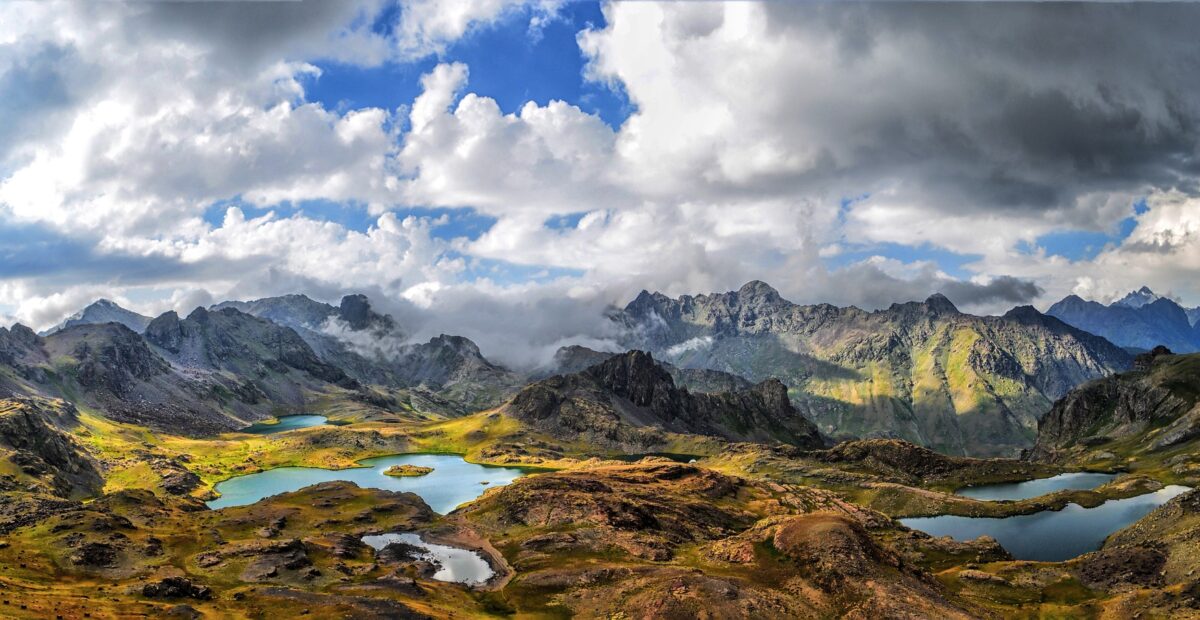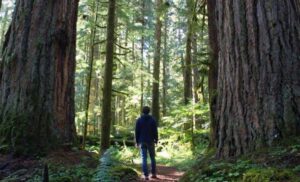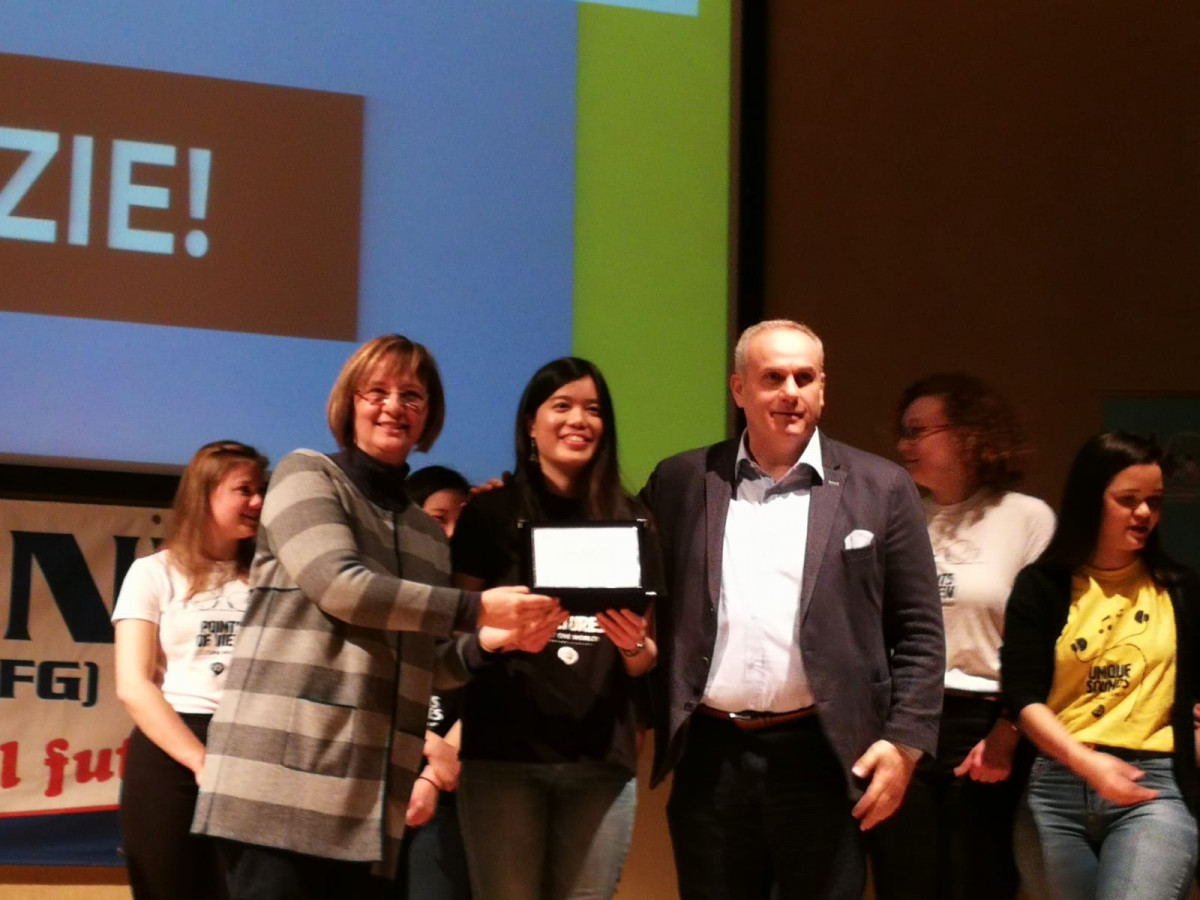
Watch
The care of relationships is the care of Creation

Interview of Giorgio Vacchiano in honor of the World Day for Prayer for the Care of Creation.
September 1st, Tuesday, will be the celebration of the World Day for Pray for the Care of Creation in Italy and in different parts of the world. It is an initiative of the Italian Church, in coordination with other European ecclasial communities, that consists of an annual day dedicated to reaffirm the importance of the “care” of our communal home, the earth—whose health, in fact, is connected to our relationship, with all that this entails in terms of justice, peace, solidarity between generations and peoples.
Giorgo Vacchiano, 40 years old, is a professor and researcher in forest management and planning University of Milan. He works to understand how the trees and forest respond to climate change, how their benefits to humanity change, how to manage them in a sustainable way by ensuring their conservation, resilience, and ability to counter the ongoing climate crisis. In 2018, he was recognized by Nature magazine for his research as 1 of 11 emerging scientists in the world who are making their mark in science. He is a member of Italian Society of Silviculture and Forest Ecology (SISEF), in which he coordinates the group for communications, and of the Ecological Society of America (ESA). He is the author of the book, The Resilience of Forest (Mondadori, 2019).
How was your love for nature born?
“My love for nature actually comes from the mountains, because in going there since my childhood it’s an environment that I have come to know well and where I feel at home. The Alps have hosted many of my summers filled with dreams and desires. My passion for mountains since then has always remained, also because my parents passed on to me a curiosity about nature, and so, when it was time for me to decide on my course of study, I thought of Forest Science. My professor of science at the time helped me understand that nature, above understanding how to manage it well, requires an understanding of which direction to give it for the good of society”.

What situation are we in today?
“The most focal point, in my opinion, is this—there are many crises, which may seem unrelated, but have the same root and are therefore, intimately united, that is, they express the same thing. Clearly, the most urgent crisis now is the health crisis, that is not an unfamiliar matter for those who know about the environment and climate, because they know there are many contributing factors to the transmission of animal pandemics to humans and the way we treat and conserve their ecosystems, especially old-growth forests, has a huge impact on this process. There is evidence that suggests that the deterioration of primary forests increases the probability of the transmission of bacteria and viruses from animals to humans. Then there is the climate crisis that is also putting the West in serious danger. Until a few years ago it seemed like a distant thing for us, even for future generations: heat waves, floods, droughts, storms, that are now also happening in Europe. As a result, another crisis broke out, a social one. In the United States, the convergence between these 3 crises was much stronger. If we think only about the Black Lives Matter movement, to the emergence of racial, social and economic injustice that these people are experiencing and it is also absolutely an environmental and climate injustice because they are people with a greater possibility of living in a contaminated zone, where the effects of climate change are more severe and grave. It’s also common that these people also suffer death rates of Covid, 10 to 20 times higher than white populations, and this is the data we must reflect on because they are examples that show very well how everything is correlated.”
But has nothing changed in recent years?
“Awareness has increased, and it’s interesting that we’ve reached this point because we’re understanding that these fundamental issues for humanity regarding the environment are not something we only deal with as a passion, or because we may be particularly sensitive to these issues. Nature can no longer be an understanding completely foregin to us, but as something that is regarded as extremely important for humanity, for the quality of our lives, for our survival, for our happiness, for our health; for the first, second, third and fourth world, together.”
Are you saying that the environmental and climate crisis can have an affect on our relationships?
“They are mirror images of another, it is difficult to understand which would be the cause and which would be the effect… instinctively, I would say otherwise: that is the system of relationships between can influence the quality of the environment for better or for worse. The more we become passionate about fraternal relationships, the more we can comprehend the negative consequences of climate crisis, of the biodiversity crisis, and we are more inclined to solve them because the health of the whales or some plant will no longer be lost in Australia, but instead the health and survival of humanity which we care about, because of the relationships above. If we have a “beacon” that a healthy relationship with those of our species, this is a lever to understand that our actions not only have consequences on ecosystems, but, through them, also on other human beings. It is an inevitable fact.”
The relationships can also get worse in a time of crisis.
“Of course, and we are experiencing it now among the States for example, with the crisis caused by Covid-19, each one settled to solve things in house, but the missing coordination at higher levels might have led to different results. There is a tendency to close inward that is not positive. The same thing is happening with the climate crisis, we have the technological solutions to de-carbon our economy and transition into completely renewable energy. It is not a problem of research, it is not a problem of knowledge, but it is a problem of cooperation because there is a lack of plenary consciousness, which leads to new developments.”
Another aspect that is related to the environmental crisis is migration…
“With the worsening of climate conditions, the living conditions for many people in several areas of the planet have become unsustainable, forcing entire populations to move. The Syrian conflict, for example, has political, social and economical, but a part of it is also due to climate because the great drought that struck Syria between 2011-2012, pushed many farmers and families who lived in rural areas to stop cultivating the land because they could no longer do so (with a loss in terms of biodiversity care, soil cultivation, etc). All of these people had to move to the city, changing the social balance, which led to what happened after. The Syrian crisis resulted in 5-6 millions refugees, the majority settling in Lebanon and other parts of Europe. The forecast of the UN estimates that at the end of the century there will be 400 million climate refugees worldwide. Migration is a phenomenon that is inherent in man but we are ill-equipped to handle the intensity which climate and migratory phenomas have changed in a very short period of time; all this has left us unprepared.”
Could you give me an example…
“A city like Miami will be threatened by rising sea levels within a few decades, and it is a city that cannot be easily rebuilt in a different place. It is our adaptability that is in crisis because ultimately we have developed an unstable climate, that is, we have come out of the climate parameters that have characterized the development of human civilization as we know it, from the Neolithic onwards. It is hotter today that in the past 10,000 years, there are storms, phenomas always more intense, our society finds itself living on a planet it no longer recognizes, it is like we have just landed on Mars and have to readapt. ”
When we think of the environment, the care of creation, the temptation is to think that these are issues concerning others.
“The temptation is to always say that environmental concerns are for politicians and we can only do so much, so we do our “small part”, the small things in our daily lives and we feel satisfied. But what really matters is to do many things and to be intentional about it and we must act on economic and political levels because they are levers of great change. If today, I can change one thing within my daily life, but tomorrow, I can change 20 things if I move at a political level—I would pick the second. Of course, personal commitments and those of greater levels can go hand in hand; the two things are not exclusive. You must have a consistent lifestyle, but I wouldn’t like to settle with the logic of “my small part” because it is dangerous. Like someone once said, the glass of water in an emergency is great but let’s not stop there, we have to think about the aqueduct!”
What is the step that we can take?
“This is a team game, an organized game, the relationship. The superhero is not enough and neither is a communal act. Everything is needed, but most importantly a network, the team and not the individual remains. Build fraternal relationships, I repeat, it raises awareness, sensitivity to others, also other people and other nations, and produces new ideas that we desperately need.
Could you give me an example?
The main field of action to resolve the climate emergency is certainly how we produce energy, it is 90% of the problem. If we could solve the energy aspect, we would have solved a lot of the problem. There are strong interests in blocking individual and collective action. In Italy, we have 19 billion a year of subsidiaries (that is, public money) set aside for the fossil fuels sector. We should see what could happen if we discontinue this flow of money, directing them to another part, to renewable energy for example. If politics could give a hand to the energy market, and each of us also give a hand in our daily lives, acting with the foresight to mend the damage that is becoming irreversible… It is a piece of the renowned aqueduct.





